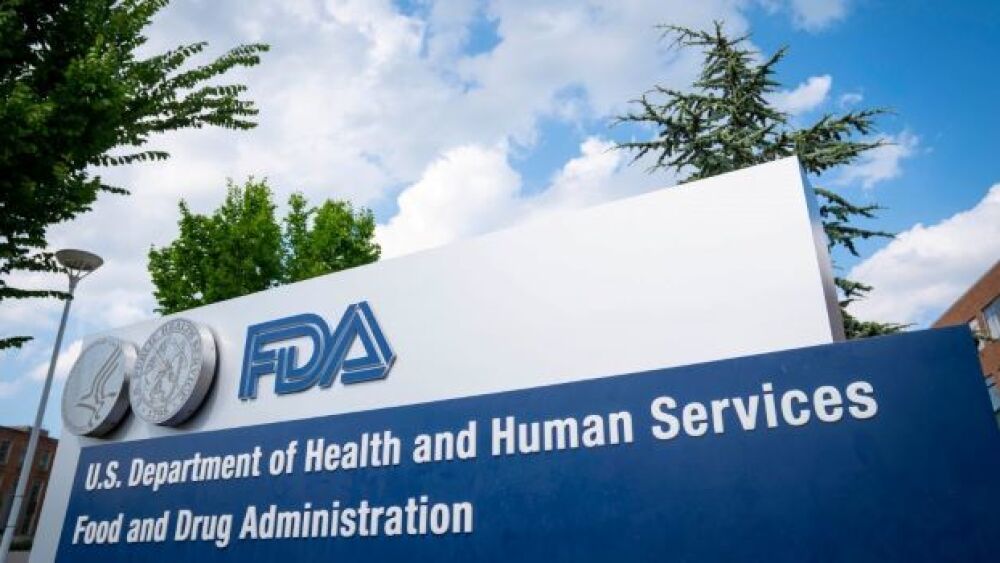Verve Therapeutics’ base editing program has been forced into a detour after the FDA placed a hold on its investigational new drug application. Beam has also posted its own regulatory update.
Courtesy Sarah Silbiger/Getty Images
Verve Therapeutics’ base editing program has been forced into a detour after the FDA placed a hold on its investigational new drug (IND) application.
One month after submitting the IND to the FDA, the biotech was notified Friday of the hold, with the promise of a detailed letter to follow within 30 days.
A Phase I trial of VERVE-101 for patients with heterozygous familial hypercholesterolemia (HeFH) is already underway in New Zealand and the U.K. The first patient was dosed in July.
Verve’s base editor technology is licensed from Beam Therapeutics. Instead of utilizing a double-strand DNA cut, like earlier generations of CRISPR, base editing swaps out a single DNA letter for another. This technique is believed to carry fewer risks of complications and off-target edits.
“The dosing of the first human with such an investigational base editing medicine represents a significant achievement by our team and for the field of gene editing,” said Sekar Kathiresan, M.D, co-founder and CEO of Verve, in July.
Beam Provides Pipeline Updates
However, the new base editing approach has already run into regulatory hurdles. In July, Beam’s own cancer therapy IND was slapped with a clinical hold. BEAM-201 targets CD7 for relapsed, refractory T-cell acute lymphoblastic leukemia.
In Beam’s case, the FDA requested:
- Additional control data from genomic rearrangement assessments
- Further analyses of certain off-target editing experiments
- additional control data for a cytokine-independent growth assay
- an updated investigator brochure that includes information regarding any new nonclinical studies
Beam has submitted its response and is awaiting the all-clear from the agency.
The biotech also has two cell therapies in the pipeline for sickle cell disease. The IND for BEAM-101 has been cleared by the FDA; Beam is prepping for a Phase I/II trial initiation for safety and efficacy. The trial will include an initial “sentinel” cohort of three patients, treated one at a time to ensure engraftment, followed by up to 45 patients. Enrollment is expected before year-end.
Beam announced it will not submit an IND for the second candidate to optimize its approach.
Next moves for Verve
As Verve waits on the FDA to make its next move, its heart-1 study of VERVE-101 in patients with HeFH in New Zealand and the U.K. will carry on. The dose escalation portion of the trial has been completed successfully in all three patients, the company reported. With no treatment-related adverse events to report, the trial is expected to move on to the second dose level.
Data from this trial was not included in the company’s IND submission.
Cardiovascular disease remains the world’s number one killer. HeFH is the most common monogenic disorder characterized by high LDL-C and premature atherosclerotic cardiovascular disease. The condition affects approximately 1.3 million people in the U.S. and 31 million globally.
With a single dose, Verve intends its candidate to permanently turn off PCSK9 in the liver, a gene that plays a critical role in controlling blood LDL cholesterol levels. Reduction of this protein improves the liver’s ability to clear LDL from the blood.
The company will work closely with the FDA to resolve the hold to begin dosing U.S. patients as quickly as possible, according to the press release.
A second program, VERVE-201, targets a key regulating gene for cholesterol and triglyceride metabolism for patients with homozygous familial hypercholesterolemia (HoFH). IND-enabling studies are currently underway.
Verve has the funds to carry the programs forward with $550.7 million on hand as of Sept. 30. Massachusetts neighbor Vertex Pharmaceuticals dropped $60 million into Verve’s accounts this summer with up to $340 million more on the line. The four-year partnership is for a gene editing therapy for an undisclosed liver disease.






